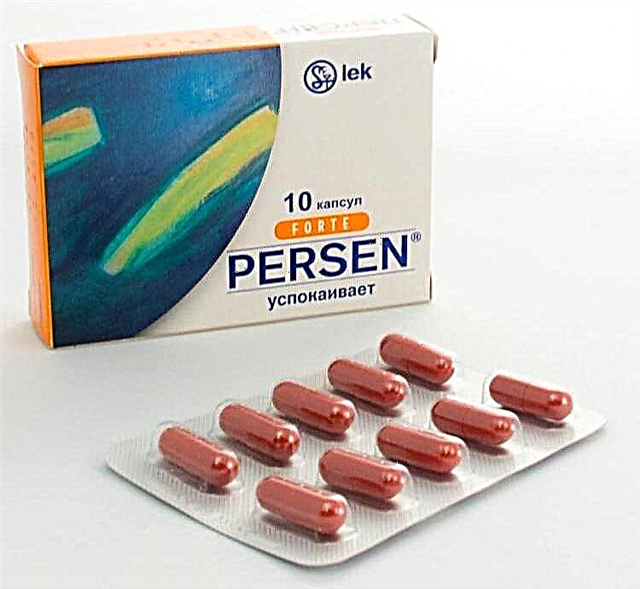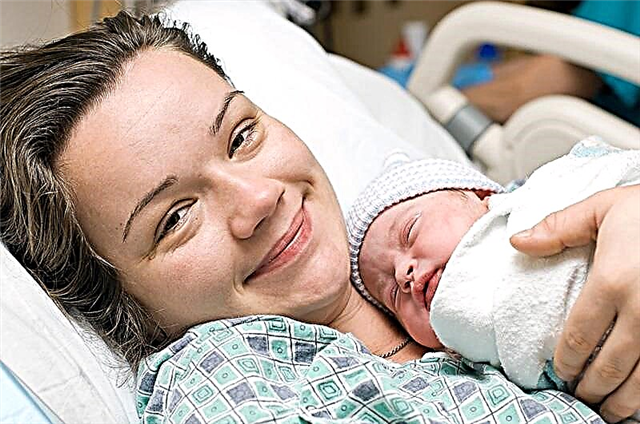
Ceraxon is one of the popular nootropic drugs. It is widely used in neurological practice, prescribing for adults with strokes and brain injuries, since its effectiveness is high for various lesions of the central nervous system. Sometimes this drug is used in children, but only as directed by a specialist.

Release form
"Ceraxon" is produced in two dosage forms:
- Strawberry flavored solution, which is taken by mouth and is sometimes called a syrup. It is a completely transparent liquid without any specific shade, placed in glass vials of 30 ml. A dosing syringe is attached to the bottle, which needs to be drawn up the dose of the medicine prescribed by the doctor. In addition, such a solution is packaged in 10 ml sachets and sold in 6 or 10 sachets per pack.
- Solution in ampoules, intended for injections into a vein or injections into muscle tissue. It is also colorless and completely transparent. One ampoule contains 4 milliliters of such a solution, and 5 ampoules are sold in one box.

Composition
The main ingredient in both forms of Ceraxon is called citicoline. It is in the form of sodium citicoline. In terms of the active substance, its dosage in 1 ml of strawberry solution is 100 mg, that is, one portion bag contains 1000 mg. As for the injectable drug, 1 ampoule can contain either 500 mg or 1000 mg of citicoline.
In "Ceraxon", which is taken orally, in addition to the active ingredient, there is glycerol, sodium saccharinate, potassium sorbate, strawberry essence, sorbitol and some other substances. They allow the preparation to remain liquid and not deteriorate during storage, and also give the solution a sweetness and pleasant smell. In the injectable form of the drug, in addition to citicoline, there is only sterile water and sodium hydroxide (this component can be replaced with hydrochloric acid).

Operating principle
Citicoline, which is part of Ceraxon, belongs to the precursors of phospholipids - important components of nerve cell membranes. Thanks to this structure, it is able to restore membranes if they are damaged. In addition, citicoline has the ability to inhibit phospholipases and prevent the formation of large quantities of free radicals, due to which this substance prevents cell death.
When using "Ceraxon", an improvement in the transmission of nerve impulses and a decrease in neurological symptoms caused by hypoxia of the brain are noted. According to neurologists, the drug showed itself well for brain damage (reduced the volume of affected tissues) and post-traumatic coma (reduced its duration and promoted faster recovery). It also helps with memory impairment, problems with speech, attention and other mental processes.

At what age is it prescribed?
If you read the instructions that are attached to both forms of "Ceraxon", then in the list of contraindications you can see children's age. Indeed, such drugs are not recommended for patients under 18 years of age, but the reason is not the toxicity and danger of the drug, but insufficient research on its safety for children.
However, many neuropathologists prescribe "Ceraxon" to young patients, including infants up to a year, if the expected benefit from the use of such a medication is higher than the possible harm.

Indications
The reason for prescribing "Ceraxon" is various brain damage or disruption of its work. The drug can be prescribed for a child with:
- mental retardation;
- speech development problems (RRP);
- intracranial injury;
- hemorrhagic or ischemic stroke;
- circulatory disorders in the brain tissues;
- the consequences of brain damage due to hypoxia;
- the threat of the development of cerebral palsy;
- brain abnormalities that have arisen due to degenerative changes.


Contraindications
Treatment with "Ceraxon" is prohibited:
- with severe vagotonia;
- with hypersensitivity to any ingredient in the solution;
- with rare hereditary pathologies, when the child does not tolerate fructose (this is a contraindication only for the solution that is drunk).

Side effects
Sometimes the patient's body reacts to Ceraxon with edema, nausea, allergic rash, tremors, decreased appetite, fever, loose stools and other negative symptoms. If any of the ailments occurs, the medication is stopped immediately.

Instructions for use
Strawberry solution "Ceraxon" is usually given to a child to drink with meals, but it can be taken at any other time. At the same time, you can drink the medicine, if desired, both undiluted and stirred in half a glass of water. The drug is taken with a syringe, given to the patient, and then the syringe is rinsed with water. The dosage of the solution for each child is selected individually. To determine it, the doctor takes into account both the diagnosis and the patient's age.
If Ceraxon is administered intravenously, the injection is given slowly (at least 3 minutes) or the solution is injected by drip, mixing the drug with dextrose or isotonic solution. Such injections are preferred over intramuscular injections. If the medication is injected into the muscle tissue, then it is unacceptable to re-inject it in one place. Usually, the injectable use of "Ceraxon" is required in an acute condition, and as soon as the patient gets better, they switch to a solution that needs to be drunk.

Overdose
Both dosage forms of the drug are classified as low-toxic, so there have been no cases of negative effects of Ceraxon when the dose is exceeded.
If the child accidentally drinks more of the solution, observation is recommended. In case of any ailments, a doctor's examination is required.

Interaction with other drugs
"Ceraxon" can be used with other drugs only as directed by a doctor. It enhances the therapeutic effect of levodopa drugs. Compatibility with any other medications, if the child is already taking any medications, it is important to discuss with the pediatrician before using Ceraxon.

Terms of sale
To buy any of the forms of "Ceraxon" in a pharmacy, you first need to get a prescription from a neurologist or other doctor. The average price of a bottle that contains 30 ml of sweet solution is 680-750 rubles. The same approximate cost of five ampoules containing 500 mg of active substance each. For 10 portioned bags with strawberry solution, you need to pay about 1600-1700 rubles.

Storage conditions
Storage of the "Ceraxon" form taken internally is recommended at a temperature not exceeding +30 degrees. If such a strawberry medicine is placed in a cold place, crystals may appear in the solution, which will dissolve on their own after several months of storage at room temperature and do not affect the quality of the medicine in any way. The shelf life of the drug is 3 years.
The solution in ampoules is also valid for 3 years from the date of manufacture. It, like the drug for oral administration, can be stored at temperatures below 30 degrees Celsius. The medicine from the opened ampoule is used for one injection.
Having made an injection, the remainder of the solution is poured out, that is, it is impossible to store an open ampoule for later use.

Reviews
In most cases, they respond positively to Ceraxon, noting the pronounced therapeutic effect of such a drug. According to the parents, the medication helps to eliminate the consequences of damage to brain cells, and has also proven itself as a means of stimulating speech development. Its advantages also include a liquid form of release and good tolerance. Such a medicine rarely causes negative side effects, and among its disadvantages only the high cost is usually mentioned.

Analogs
Preparations-analogues of "Ceraxon" on the active ingredient are "Neipilept" and "Recognan". They are used for the same indications and are presented in the same dosage forms, but they are also not recommended for patients under 18 years of age. To give a child these funds, like "Tserakson", can only be prescribed by a doctor.
To replace "Ceraxon" in childhood, other nootropics can also be used that are approved for young patients. Among them, the most popular are the following drugs:
- Phenibut. These tablets act due to aminophenylbutyric acid, which can affect blood flow and metabolic processes in brain tissues. They are prescribed to patients over three years old for the treatment of stuttering, kinetosis, asthenia, insomnia, and other problems. Among the analogues of such a drug, which also contain aminophenylbutyric acid, are Anvifen capsules (they are used from 3 years old) and Noofen capsules (due to a higher dose, they are prescribed from 8 years of age).

- "Cogitum". This drug, which children like for its banana taste, is drunk with developmental delay, neurosis, head injury and other diseases. Its active component is acetylamino succinic acid, a substance capable of stimulating metabolic processes in neurons. The medicine has been used since the age of seven, but many neurologists prescribe Cogitum for younger children.

- "Pantogam". Such a nootropic agent acts thanks to hopantenic acid, which is able to protect neurons from various negative factors and improve metabolic processes in them. It is usually prescribed for children in syrup, since liquid Pantogam can be used from birth, has a pleasant cherry taste and is easily swallowed by young patients. The solid form is prescribed for epilepsy, nervous tics, cerebral palsy, enuresis and other problems from the age of 3. It can be replaced with Pantocalcin tablets.

- "Aminalon". The effectiveness of such tablets for various problems with the central nervous system is due to the presence in them of an important neurotransmitter called aminobutyric acid. The drug is prescribed for children over one year old and can be replaced with an analogue called "Gammalon", which is also presented in a solid form and contains the same active compound.

- "Encephabol". This nootropic is popular for encephalopathy, brain injury, developmental delay, and other neurological pathologies. It works thanks to pyritinol, a substance that improves glucose uptake by neurons, stimulates the transmission of nerve impulses and stabilizes membranes in brain cells. The suspension is used even in infants (it is prescribed from the 3rd day of life), and in tablets "Encephabol" can be given to children over seven years old.

- Cortexin. This medicine is in demand for various neurological diagnoses, including cerebral palsy, speech underdevelopment, epilepsy, encephalopathy, and so on. It is released in a solution intended for intramuscular injections. Injections are prescribed for children of any age, including premature babies. Cortexin is based on low molecular weight peptides, which have properties to protect neurons and stimulate their functions, as well as accelerate the recovery of nerve tissues after damage.

For information on whether it is possible to assign "Ceraxon" to children, see the next video.



